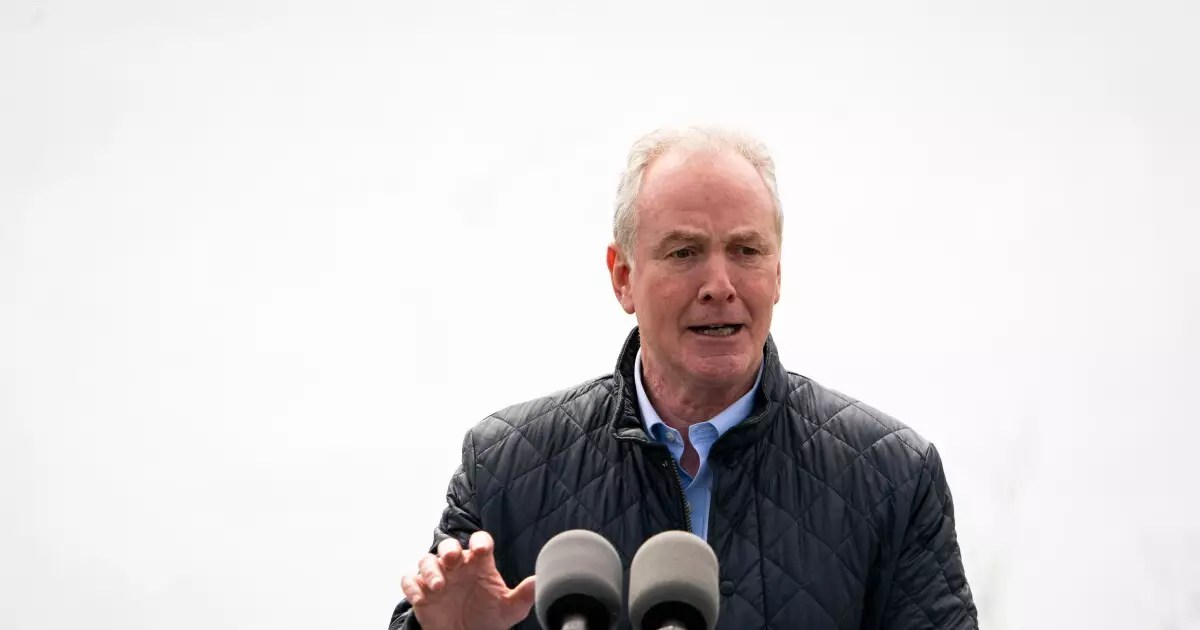The turbulence in the U.S. Congress has unveiled deep-seated tensions among lawmakers, with a recent continuing resolution (CR) just managing to avert a government shutdown until March 14. In this environment, the clash over the debt ceiling looms ominously, promising significant implications for fiscal policy and governance. The CR itself, however, was not without its victories and losses, revealing the intricate power dynamics that play out on Capitol Hill.
This particular CR, which keeps the government operational for a mere three months, was fraught with contentious provisions. Key among them was the approval of significant federal funding aimed at resolving major infrastructure issues in Maryland, particularly the replacement of the Key Bridge, which had suffered damage after running into a disabled cargo ship. Senator Chris Van Hollen celebrated this achievement as a victory for the state, noting the importance of federal assistance in moving the reconstruction agenda forward without financial strain on local taxpayers. However, this appropriation faced ideological opposition from fiscal conservatives who expressed concern over the use of federal funds for a state-specific project. Despite the promise of reimbursement from Maryland, the debate raises fundamental questions about federalism and the allocation of taxpayer dollars.
Moreover, the CR’s stipulations included the transfer of the RFK Stadium site back to Washington, D.C. This maneuver highlights the ongoing struggle for D.C. to attain greater self-governance. Congresswoman Eleanor Holmes Norton framed the restoration of authority over the stadium as a pivotal moment in D.C.’s fight for autonomy. The fact that this provision nearly fell victim to negotiations, only to be reinstated, underscores the often precarious nature of legislative victories. It reflects a broader narrative of D.C. grappling with its political identity amid federal oversight.
While the CR temporarily relieved pressure on the government funding front, the unresolved issue of the debt ceiling presents a looming crisis. The reluctance of House Republicans, particularly a faction loyal to former President Trump, to entertain negotiations regarding the debt ceiling signifies a fracture within the party. Trump’s provocative insistence on including a debt ceiling increase in ongoing negotiations has exacerbated tensions, showcasing the potential for intra-party conflicts that could jeopardize future legislation. The debt ceiling itself raises critical questions about the government’s creditworthiness and could instigate broader uncertainty in the financial markets, especially the Treasury bond market, which thrives on the assurance that the U.S. will meet its financial obligations.
These developments also signal potential shifts in Congressional leadership, particularly for House Speaker Mike Johnson. The friction between factions within the Republican Party, especially with the emergence of influential figures like Elon Musk weighing in, raises concerns about Johnson’s capacity to maintain party unity moving forward. The looming reexamination of the Tax Cuts and Jobs Act (TCJA) further complicates matters. It not only defined Trump’s first term but has now emerged as a focal point for fiscal policy discussions that will shape the economic landscape. As Chairman Jason Smith of the House Ways and Means Committee asserts the necessity to extend the TCJA’s provisions, it remains uncertain how these discussions will play out against the backdrop of the debt ceiling negotiations.
As Congress navigates through these politically charged waters, the future of both fiscal policy and legislative collaboration hangs in a precarious balance. The ramifications of the CR, the unresolved debt ceiling crisis, and the ability to sustain or alter Trump-era tax policies represent a critical juncture for lawmakers. Will they capitalize on the current crisis to foster bipartisan cooperation, or will the fractures deepen, complicating an already turbulent political landscape? The outcome remains uncertain, but what is clear is that the decisions made in the coming weeks will have lasting implications for governance and public policy in the United States. As Capitol Hill grapples with these disputes, one thing is evident: the political landscape will continue to evolve, shaped by the choices and challenges encountered by its leadership.


Leave a Reply